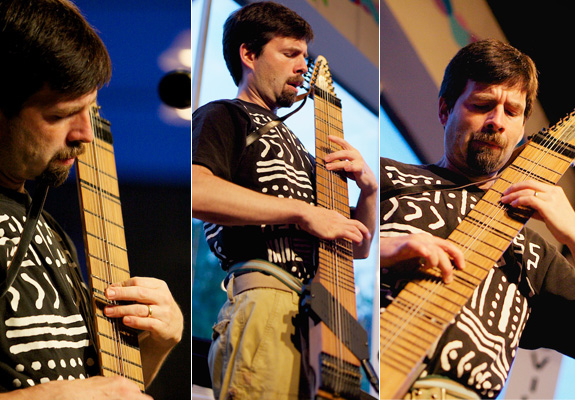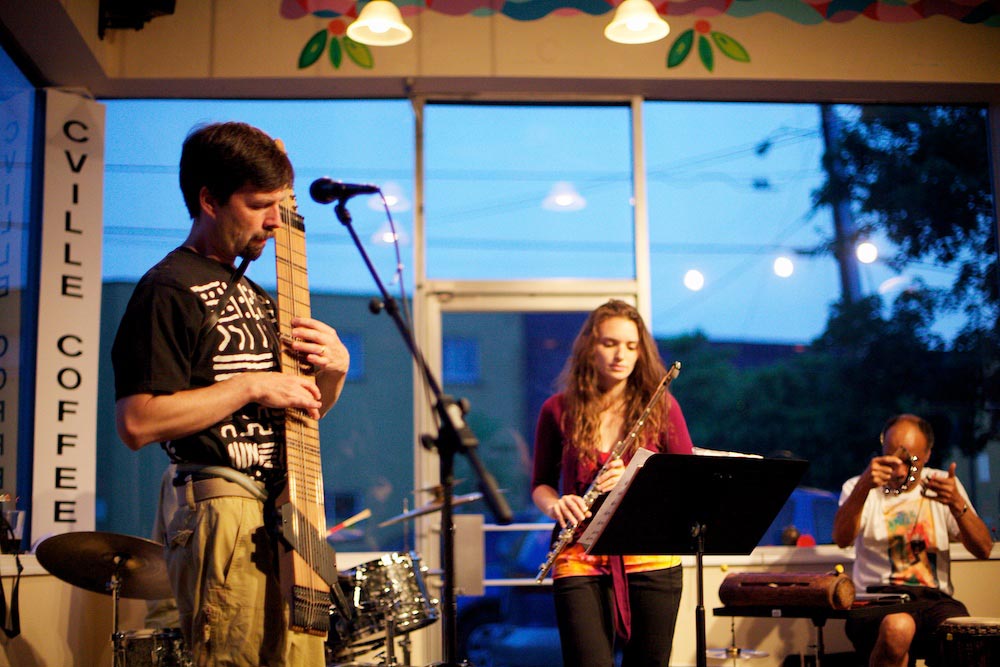The Most Amazing Instrument You’ve Never Heard Of
Greg Howard (Col ’86) expands musical horizons with the Chapman Stick
When Greg Howard was a third-year student at UVA, he decided he was ready for a new musical challenge.
He’d played saxophone, clarinet, piano, organ—even volunteered to carry a sousaphone in his high school marching band in Northern Virginia. “They’d say, ‘We need somebody to play bells in this tune.’ Nobody could do it, so I said, ‘I’ll do it,’” Howard (Col ’86) recalls.
So he went into a D.C.-area music store thinking he’d invest in a new keyboard, one with the latest high-tech gear. Instead, he tried a little-known instrument called the Chapman Stick—and fell instantly in love.
“I started playing it and it was like ‘Wow! This thing is amazing.’” He’d seen one played before, but “I had no idea what you could do with it,” Howard says. “So I gave them all the money I had and said, ‘Hold this for me.’ Then I went and got my first credit card to pay the rest.”
That investment paved the way for a pursuit that has defined Howard’s musical path. Now a member of the UVA music department performance faculty, Howard has performed internationally, written and videotaped instructional materials, composed original material (he has nine CDs on his own label, Espresso) and brought exposure to an instrument still in the shadows of mainstream music.

At first glance, the instrument looks more like a board than a stick; and at first listen, it becomes a revelation. Howard’s fingers move with a mesmerizing flow, and in his hands the Stick becomes a one-man orchestra as he blends intricate melodies, rhythms and chords into a rich sonic texture.
“You can play any kind of music on the Stick. It’s a true tabula rasa,” Howard says, launching into a few measures of a hard rock tune followed by a flamenco toe-tapper that sounds like three guitars playing simultaneously.
Developed by Emmett Chapman in the late 1960s and early 1970s, the Stick is an electric stringed instrument that allows players to combine bass, melody and chords using a unique two-handed technique. The strings aren’t plucked as with harps or guitars, nor hammered as with pianos; they are tapped, with each note sustained as long as the player presses the string down with his finger. And the strings (10- and 12-string models are standard) are arranged in two sets to take advantage of both hands.
“Each hand can play melodic lines, chords, whatever, very much in the way a piano works. And they can also work together,” he says before launching into a dense tapestry of tones. “It has an orchestral capability you don’t get on any other instrument. With one hand, you can play very deep bass notes and fill in the rest of the chord voicing much higher.”
The instrument’s versatility and Howard’s agility—he’ll play Deep Purple’s “Smoke on the Water” one minute and a Bach cello suite the next—have gained him some interesting gigs. He’s performed twice at the Montreal Jazz Festival, led seminars in Europe and recorded and toured with Dave Matthews Band. Locally, he’s recorded and gigged with icons such as jazz trumpeter John D’earth and guitar wiz Tim Reynolds.
It was the guitar, in fact, that inspired Emmett Chapman’s development of the Stick. “He wanted to expand the orchestral possibilities of the guitar,” Howard explains. “He was listening to [Jimi] Hendrix and John McLaughlin, so he was already keyed in to the idea that the guitar had all these possibilities.”
Howard’s inspiration also has guitar roots in bassist Tony Levin, whose résumé includes King Crimson, Peter Gabriel and, currently, Stick Men.
Oddly, Howard says, “I never learned guitar or bass, though I loved guitar players.”
Perhaps that will present a musical challenge for another day.
